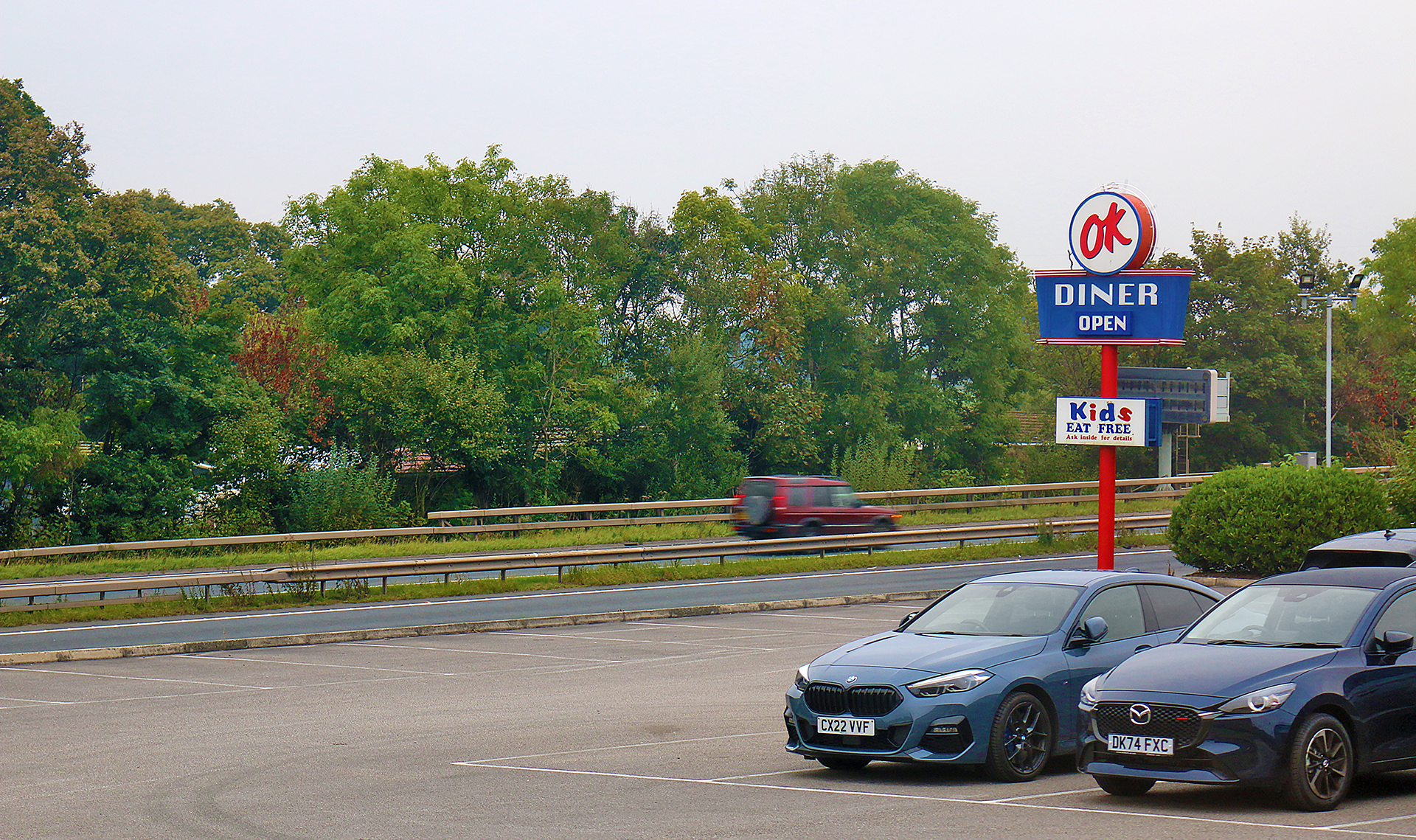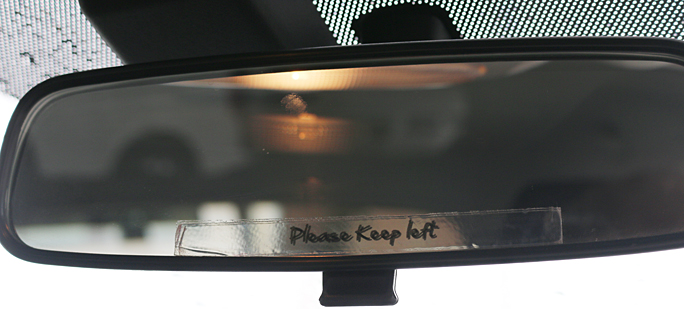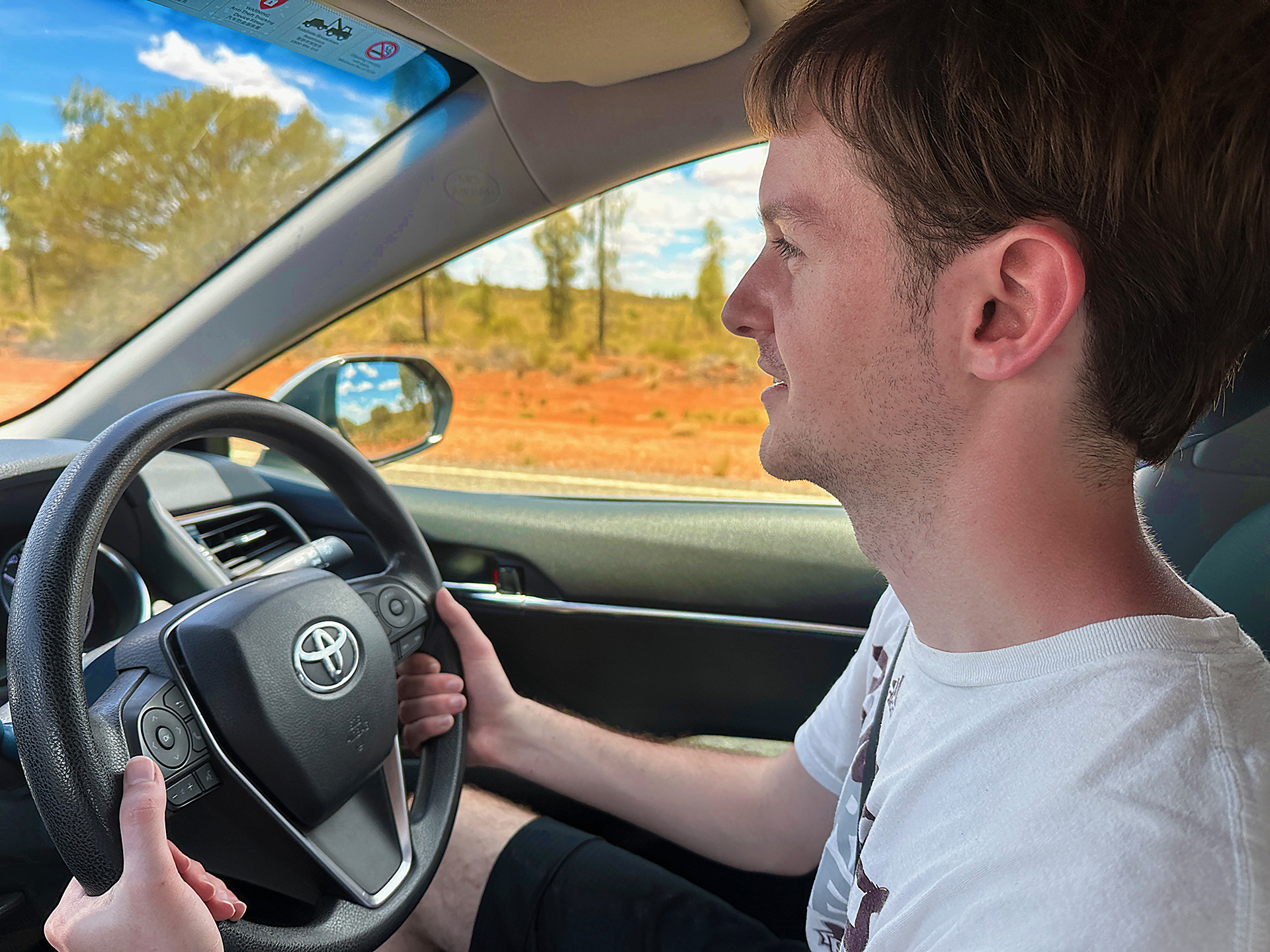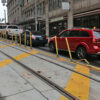Note: This article was originally published on Wednesday, March 28, 2018 at 10:48 in the evening and has been updated.
Left-hand-side driving on foreign roads may be scary to some people: “I don’t scare easily, but nothing puts the fear of God in me like left-hand-side driving on foreign roads” is what Christopher Elliott wrote in this article for Travelers United, which is an advocacy membership organization that represents all travelers. “On a recent visit to Bermuda, while I was taking a pre-dawn walk along a winding road, I nearly collided with a swarm of scooters. Turns out I was facing the wrong direction. In London, despite signs on the pavement warning tourists and absent-minded pedestrians to ‘look right,’ I was almost run over by a bus. I’ve never tried to rent a car there. I don’t dare.”
No, Left-Hand-Side Driving on Foreign Roads is Not Scary…

The aforementioned article no longer exists; but as I am currently in Australia — where vehicles are driven on the left side of the road — in March of 2025, this is still a relevant topic to revisit.
As a citizen of the United States, I am accustomed to driving on the right side of the road…
…so does that mean that those who drive on the left side of the road drive on the wrong side of the road? Of course not — but that can cause potential discomfort to a person who has never driven on the opposite side of the road to what he or she is used to in his or her native country.
I will never forget the anticipation and trepidation of driving on the left side of the road for the first time: I was traveling as a passenger in the business class cabin seated upstairs on a Boeing 747-400 aircraft operated by Qantas Airways; and during the flight which lasted for approximately 14 hours — interrupted by a nap which lasted 30 minutes at the most; and that is not counting no sleep on two previous flights — I frankly was quite nervous about driving on the left side of the road.
Fortunately, I am experienced with driving a vehicle with manual transmission; but I am not left-handed. How will I do shifting with my left hand? Is everything in reverse to what I am accustomed — the gears, the pedals, the light and windshield wiper control stalks?
Despite the fact that approximately 90 percent of the total road distance in the world carries traffic on the right side of the road, I have since driven in at least eleven countries where driving on the left side of the road is compulsory; and I have never been involved in an accident — unless you count that stupid pothole I encountered on highway R76 in South Africa on my way to Lesotho.
Every time I return to the United States after visiting a country where people drive on the left side of the road, I am always asked how I do it. It is not difficult, really — but I thought I would relay my observations and experiences to you if you have had little to no experience driving on the opposite side of the road in a different country.
Count on Driving a Vehicle Equipped With a Manual Transmission
“With the lone exceptions of within the United States and Oman, every car I have ever rented was equipped with a manual transmission; so be prepared to drive using a stick shift when renting a car in another country” is what I originally wrote in this section of this article — but that has changed in the seven years since this article was first published.
I prefer driving a vehicle with a stick shift; so I have never thought to ask if I could rent a car with an automatic transmission instead — but you probably could do so if you are so inclined. You might pay more for a vehicle equipped with an automatic transmission, however…
…but rental vehicles that are equipped with an automatic transmission are becoming more prevalent. Australia, Canada, New Zealand, and Mexico are just some of the countries where renting a vehicle with a manual transmission seems to be no longer an option, as I have experienced over the years. The likely primary reason is that fewer motor vehicles that are equipped with manual transmissions are being manufactured, with some automotive companies eliminating that option altogether.
Everything IS Opposite — Except…

When you get into a car in a country where you are supposed to drive on the side of the road opposite of what you are used to driving in your home country, the most obvious observation to you will be that the steering wheel is on the “wrong” side of the car — especially when you attempt to enter the car on the same side as you typically would in the country where you are based.
The stick shift will indeed be in the center of the vehicle between the front seats for the driver and the passenger. The good news is that the shifting works exactly the same in cars where the steering wheel is on the left as well as cars where the steering wheel is on the right — but that is also the bad news. Shifting into first gear will be on the upper left of the gearbox; but if you are accustomed to shifting to first gear being closest to you while in the driver’s seat on the left side of the car using your right hand, you will need to get used to shifting to first gear being farthest away from you while in the driver’s seat on the right side of the car using your left hand. Again, do not fear — it is not that difficult to do; but it will feel strange at first.
The pedals are the same, no matter on which side of the road you drive: the clutch pedal is on the left; the brake pedal is in the middle; and the acceleration pedal to give gas to the car is on the right. Phew. That is a relief.
What used to befuddle me the most, however, are the stalks which control the lights and turn signals and windshield wipers, as they are on the opposite sides of the steering wheel. I turn on the lights or use the turn signals and the windshield wipers were activated. I turn on the windshield wipers and the lights or turn signals went on. Even worse is that once I became used to where the controls were located, I initially went through the same scenario once I returned home to use my vehicle. That does not happen to me anymore; but that should be the worst thing that could happen to me — or to you.
The Most Difficult Time Driving on the Opposite Side of the Road Can Be…
…when you are in a congested area with a lot of traffic and you are turning onto another street while manually shifting in a place where people seem to drive in a crazy and aggressive manner, as it can tend to potentially cause you to be nervous. You might start to overthink what you need to do, as you need to concentrate on which side of the road to drive as well as shift correctly — especially when drivers start honking their horns for you to move or get out of the way.
Arguably, it can be equally difficult remembering on which side of the road you should drive if you are on a desolate two-lane highway with a broken painted line dividing the road in the middle of nowhere — such as in the Outback in central Australia, for example — as there are few signs or little traffic to remind you on which side you should drive.
Take a split second to remember your basic driving skills and try to relax as you drive while still keeping acutely aware of what is going on around you. You are better off taking that split second for yourself than to needlessly commit an error which could possibly lead to an accident — or worse.
Feeling Homesick? Use Your Rear-View Mirror

Driving down the highway and observing other vehicles gives me the illusion that there are driverless cars escorting passengers around all over the place. It is a strange sight at first; but a quick look in the rear-view mirror where everything looks normal again can help.
Need Some Practice? Find a Quiet Area
If you believe you need some practice to get yourself better acclimated to driving on the opposite side of the road, ask to find a quiet place where you can practice — such as an empty parking lot, for example.
If you are located in a busy or congested area, perhaps take some time to adjust to the shifting positions of the gears of the stick shift — as well as acclimate yourself with the positions and functions of other controls — while the vehicle is stationary…
…but then again, you are reading an article written by a person who first learned how to drive a vehicle with a standard transmission in an empty parking lot late at night in Jericho, New York. My second outing driving a vehicle using a stick shift was on the Brooklyn-Queens Expressway — something I would not particularly recommend to any novice.
Crossing Land Borders
I have never crossed a land border from one country to another — yet, anyway — where drivers are required to switch from one side of the road to another. I will hopefully experience this one day. Although there are some land border crossings where bridges or other devices automatically assist you in switching sides of the road, you will most likely have to stop at a land border crossing anyway to get your paperwork in order; so switching sides of the road on which to drive should not be difficult to achieve.
Rare Exceptions
If you drive in the Bahamas, for example, you are required to drive on the left side of the road — but the steering wheel is also usually on the left side due to many of the cars being imported from the United States. This may seem even more bizarre than simply driving on the opposite side of the road — at least, it did to me when I was in the Bahamas several years ago. Thankfully, exceptions such as the Bahamas are rare around the world — but be aware that they do exist.
Final Boarding Call
The aforementioned article by Christopher Elliott recalled one which I first wrote on Tuesday, March 17, 2015 as a Stupid Tip of the Day; so I thought I would revisit driving on the opposite side of the road for this article.
I have driven on the opposite side of the road in at least 15 countries; and believe it or not, it actually became second nature to me — so much so that at times I question myself because I no longer think about it.
Ironically, one of the scariest overall experiences was when I was driving on the right side of the road, as is the practice in Cairo — and I give eight tips on how to drive in Cairo and other parts of Egypt in this article.
Left-hand-side driving on foreign roads need not be scary. As I have already mentioned, driving on the opposite side of the road really is not all that difficult if you take the extra care necessary while driving. Complacency is your enemy here; but then again, it should also be your enemy when driving in more familiar surroundings.
Please drive carefully — no matter on which side of the road you drive.
All photographs ©2015 and ©2024 by Brian Cohen.

